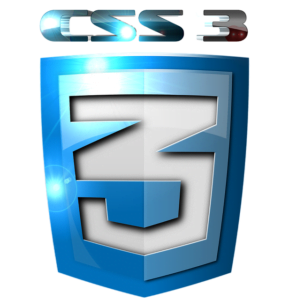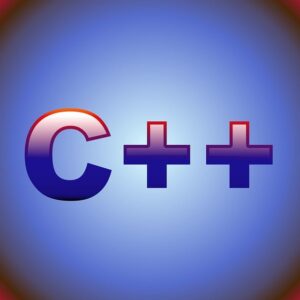Over the last 10 years, Python has become a rockstar of programming languages. It has developed a huge fanbase across the tech world, with devotees in fields like web dev, data science, and machine learning chanting its praises. Major tech gods including Google, Facebook, Netflix, Dropbox, and Reddit are now python disciples, using it to power their core systems and apps. Python’s incredible flexibility, uber-readable code, and sweet stack of ready-to-use libraries have launched it into stratospheric popularity. As Python continues its rise to programming language fame, its emphasis on simplicity and practicality wins over new follower developers everywhere.
As Python continues to mature and evolve, it is cementing itself as the backbone and workhorse of software engineering and data analytics
An Overview of Python
In 1991, programmer Guido van Rossum introduced Python – an easy-to-learn but mighty programming language. With its emphasis on simple, readable syntax, Python makes writing and reading code less headache-inducing. As a dynamically typed language, Python frees developers from explicitly declaring variable types. It enables programmers to use procedural, object-oriented, or functional styles flexibly. Python’s automatic memory management and vast standard library modules reduce time spent on common tasks.
Python’s Capabilities and Benefits
Myriad third-party packages available through the Python Package Index boost its capabilities exponentially. Python prioritizes developer productivity over rigid coding dogma. Its smooth learning curve, versatile capabilities, and engaged community have fueled its rise as a widely used language from web apps to data science. Though continuously evolving, Python retains accessibility for coding newcomers and experts alike.
Python as an Industry Standard
Python retains beginner-friendly qualities while evolving as an industry-standard language Python manages memory automatically and contains a robust standard library of modules for common programming tasks right out of the box. The Python Package Index (PyPI) holds over 200,000 additional third-party libraries and packages waiting to be utilized. Python’s design philosophy focuses on code readability, simplicity, and developer productivity over esoteric syntax or rigid formal paradigms. These qualities make Python well-suited to tackle anything from simple scripting to machine learning and data analytics. As Python continues its meteoric rise, a vibrant and actively engaged community and an emphasis on usability help it retain its magic as a language uniquely suited for beginners and experts alike. Python code tends to use fewer lines than other languages like C++ or Java. This makes Python easier to learn and use.
Why is Python So Popular?
Some key reasons for Python’s popularity:
- Easy to read and write, great for beginners
- Huge selection of libraries and packages
- Active open source community provides support and resources
- Cross-platform compatibility
- Used for web development, data science, AI, and more
Python Installation
To start coding in Python, you need to install it first. Download the latest Python release at python.org for your operating system.
For Windows, choose the Python installer executable. On Mac or Linux, use the default package manager.
Setting Up a Python Environment
With Python installed, you need an environment to run code. Options include:
- IDEs like PyCharm, VS Code, Spyder
- Notebooks like Jupyter
- Terminal (comes built-in)
import numpy as np
x = np.arange(0,10)
print(x)Python Basics
Now that setup is complete, let’s cover some Python fundamentals.
Variables and Data Types
Unlike other languages, Python has dynamic typing. You don’t declare variables – just assign values and Python determines their type.
name = "John" # String
age = 25 # Integer
grades = [80, 90, 95] # ListCommon Python data types include strings, integers, floats, booleans, lists, tuples, dicts.
Operators and Expressions
Python offers standard arithmetic operators (+, -, *, /) for math operations. Comparison operators like == and > evaluate conditions. Logical operators like and/or/not are used in compound expressions.
Control Flow Tools
if/else statements allow you to execute code based on conditions. For and while loops iterate over sequences to repeat actions.
for i in range(5):
print(i)Functions and Modules
Functions package code into reusable blocks that can be called. Modules organize related functions and classes. Python ships with many built-in modules and you can import third-party packages.
Building Programs
With Python fundamentals covered, you can start writing programs. Break problems down into logical steps and leverage tools like functions, loops, conditional logic, and more. Don’t forget docstrings and comments!
Python for the Web
Popular frameworks like Django and Flask provide capabilities to build full-featured web apps and APIs.
from flask import Flask
app = Flask(__name__)
@app.route("/")
def home():
return "Hello World!"Python for Data Analysis
Packages like NumPy, Pandas, Matplotlib are used for data manipulation, analysis and visualization.
import pandas as pd
data = pd.read_csv("data.csv")
print(data.mean())Python for Machine Learning
Scikit-learn offers a variety of machine learning algorithms. TensorFlow and PyTorch are used for deep learning and neural networks.
Becoming a Python Pro
With dedication and practice, you can master Python for professional projects and advance your programming career. Some tips:
- Build a portfolio of projects showcasing your skills
- Contribute to open source Python projects
- Stay up to date with latest packages, techniques
- Learn complementary skills like SQL, statistics, software design



